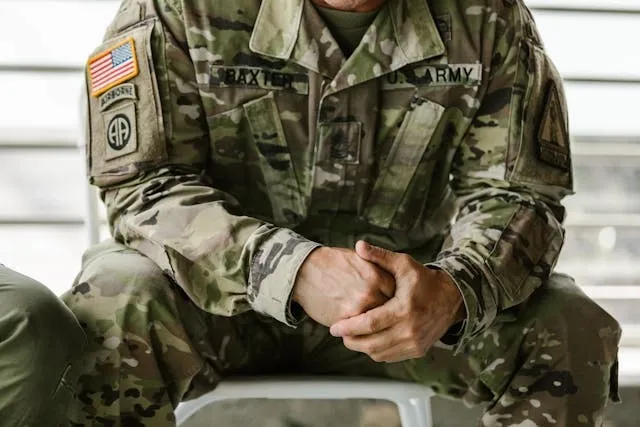Types Of Patches: Clothing Styles, Customization Options, And Material Compatibility
Patches have evolved from utility items to coveted design features in the worlds of fashion, and branding. Whether you are personalizing a denim jacket or adding flair to a uniform, understanding the various types of patches is important.
In this guide, we walk you through the different types of patches for clothes and beyond. Read on for insight into their construction, uses, and applications. This knowledge will arm you to select or create the perfect patch for any need.

Key Takeaways
- Patches come in a wide range of materials and designs, and knowing whats available helps you tailor your project.
- There are different types of patches for clothing, branding, military use, and more, with popular styles including embroidered, leather, and chenille patches.
- Patch types vary in texture, durability, and stitching methods, and certain patches are better than others for specific applications.
- We supply high-quality custom patches in a range of styles and materials, so you can create the perfect patch for your needs with our online service.
Table of contents
-
Types Of Patches
-
Most Popular Kinds Of Custom Patches
-
What Patch Types Are Used For Clothing And Fabric?
-
Different Types Of Embroidered Patches
-
What Are Leather And Faux Leather Patch Options?
-
What Are PVC And Rubber Patches Used For?
-
What Are Chenille Patches And Where Are They Used?
-
What Are Bullion, Metallic, And Beaded Patch Styles?
-
What Are The Different Types Of Medical Patches?
-
What Is The Strongest And Most Durable Patch Type?
Types Of Patches
The word ‘patch’ can mean different things across various domains. For example, in textiles, patches are fabric pieces affixed to clothing for decoration or repair, while in medicine they may deliver medication transdermally. In software, meanwhile, they are small updates that fix or improve a program.
This article focuses primarily on clothing patch types, but we will also touch upon some different categories. Different types of patches for clothes can include embroidered and printed options to leather, PVC, and novelty materials. It is important to understand these variations when choosing a patch for different purposes, such as:
- Branding
- Restoration
- Identity
- Creative expression
Clothing patch types also differ in terms of application methods, with iron-on, sew-on, or adhesive patches being popular.
Choose the right type of patch for durability, aesthetics, and compatibility with your needs. For example, you could work with us to create custom police patches if that works for your needs, but we also offer a diverse array of other patch types.

Most Popular Kinds Of Custom Patches
With custom patches, you have endless possibilities for personalization, including branding and fashion. Popular types include embroidered, woven, and PVC patches, so let’s take a little look at them:
- Embroidered patches: These are appreciated for their classic texture and raised threads.
- Woven patches: These follow closely, offering intricate detail with a smoother finish.
- PVC patches: Alongside rubber patches, these stand out in rugged environments with their water resistance and dimensional design.
The best custom patch makers will offer a range of materials. Other options you might encounter include luxurious leather patches and soft, fuzzy chenille, iconic in varsity fashion.
Each patch type is customizable with logos, fonts, colors, and shapes, and our service ensures they meet industry or personal needs. Whether you are outfitting a sports team, creating band merch, or enhancing uniforms, understand the different kinds of patches available to find the right one for you.
Looking for different patch types for specific applications in the world?
Work with us to create custom military patches, scout patches, brand patches, and various other types in a range of materials, styles, and attachment methods at great prices.
What Patch Types Are Used For Clothing And Fabric?
When it comes to your garments, different types of patches for clothes are available to serve practical and decorative functions. From covering holes to adding some artistic flair, your chosen clothing patch type should suit your fabric and your goals.
Let’s look at popular clothing patch types:
- Sew-on patches: These are widely used, delivering a strong attachment that is ideal for heavy-use items like acrylic beanies or outerwear.
- Iron-on patches: These offer convenience, but may be less durable.
- Adhesive patches: If you want temporary flair, these can be a good option.
Fabric type is a key variable in which types of patch to use. Cotton pairs well with embroidered patches, while PVC or leather may be a better fit for jackets. You can also choose between visible patch types to make a statement or more discrete patches for subtle reinforcement.
Popular clothing patch types include appliqué, embroidered, and woven options. Make sure the patch materials complement the base fabric, particularly with regards to washability and flexibility.
What Are The Different Types Of Clothing Patches?
There are several different types of clothing patches intended for different garments, each offering unique benefits. The biggest distinction is between functional and aesthetic patches:
- Functional: These often go on areas like elbows or knees, and are designed to extend the life of clothing.
- Aesthetic: These patches are used to decorate jackets, jeans, or backpacks.
Embroidered patches are generally the most common, providing textured designs and durability. Woven patches, meanwhile, offer fine detail, so they are great for custom text patches. Printed patches are a lightweight, flexible option, and leather patches offer a rustic or premium look.
At our store, you will find a broad selection of custom patches made from high-quality materials. Explore options to find what will suit your garment type and bring your custom design to life. We offer benefits like competitive pricing, fast turnaround times, and generous bulk discounts.

Different Types Of Embroidered Patches
Embroidered patches are among the most versatile and durable options you will find. Their construction involves a fabric base with layered thread stitching to create the design, delivering a raised, tactile effect.
In this category, there are several types of embroidered patches:
- Fully embroidered: These have 100% thread coverage for a rich, textured appearance.
- Partially embroidered: These allow the background fabric to show through for a lighter, less dense look.
- 3D puff embroidered: This uses foram under the thread for a three-dimensional effect often seen on hats, logos, and the best gi patches.
All these types of embroidery patches work well on uniforms, branded apparel, and decorative fashion. They also hold up well to washing, particularly if they are sewn on. With embroidered patches, you can incorporate vibrant thread colors and fine detail.
Create patches that attach to clothing the way you want them to
With our online service, you can create custom iron-on patches, sew-in patches, Velcro patches, and more, with diverse customization options and high-quality craftsmanship.
Get startedWhat Are Leather And Faux Leather Patch Options?
Leather and faux leather patches offer a sleek, sophisticated touch for clothing and accessories. These patch types are valued highly in fashion as they offer a good balance of durability and water resistance as well as a timeless aesthetic.
Real leather patches are made from animal hides, so they have a natural texture and color variation. Faux leather patches, meanwhile, are crafted from synthetic materials designed to mimic the look and feel of leather. Both versions are commonly used on denim, outerwear, and bags.
These patches can make great gifts for motorcycle riders, but they are also popular for branding - often stamped or laser-etched with logos. Unlike fabric-based patch types, leather patches aren’t usually embroidered, but they can still be sewn or adhered to certain garments.
Faux-leather patches are cruelty-free and often more affordable. These are different kinds of patches that serve both functional and stylistic roles.
What Are PVC And Rubber Patches Used For?
PVC and rubber patches are known for durability, flexibility, and a bold appearance. They are waterproof, which makes them ideal for outdoor applications like tactical gear. Unlike fabric patches, PVC patches are made from soft plastic and can be molded into complex 3D designs.
We often see them used by:
- Military units
- Airsoft teams
- Outdoor brands
Rubber patches share similar qualities, and the term is often used interchangeably with PVC. Both patch types are suitable for being sewn on, but are also commonly attached with Velcro or adhesive backings.
One consideration is the challenges regarding the sustainability of PVC, but this is something manufacturers are continually working on. When you want high-performance branding or identification solutions, these are among the strongest patch types available.
Looking for the right texture and aesthetic on your custom clothing patches?
Our service can be used to create custom chenille patches, embroidered patches, woven patches, printed patches, and more. Just make your choices in the ordering process.
What Are Chenille Patches And Where Are They Used?
Chenille patches are a soft, fuzzy type of patch that is made using looped yarns, usually applied to felt backings. They are widely recognized for their use on varsity jackets, team uniforms, and other school apparel.
This clothing type patch delivers a bold, tactile look that is idea for showcasing things like:
- Letters
- Mascots
- Numbers
With that iconic texture, chenille patches have a nostalgic feel, so they can be useful in how to dress 80s with normal clothes.
These patch types are typically larger and more decorative than others. Though they can be glued or ironed on, sewing tends to be the preferred method for a secure attachment. In these different types of clothing patches, chenille is often combined with embroidery or twill broders to enhance durability and detail.
Whether you’re reviving a retro look or representing a team, chenille patches are a stylish and attention-grabbing option.
What Are Bullion, Metallic, And Beaded Patch Styles?
Bullion, metallic, and beaded patches are luxurious patch types that are often reserved for ceremonial, military, or high-fashion use. Let’s look at each of them individually:
- Bullion patches: These are handcrafted using coiled wire, metallic threads, and felt backing. They deliver a shimmering experience and dimensional texture, commonly seen on blazers, regalia, and formal wear.
- Metallic patches: These can include foil elements, glitter threads, or metallic embroidery to add sheen.
- Beaded patches: These are made with sequins, pearls, or glass beads to create ornate, eye-catching designs. They often pair well with other accessories like custom shoe charms.
All these different types of patches are wearable art, and are typically sewn by hand due to their delicate components. If you want an elevated, standout clothing patch type for a jacket, costume, or display garments, these could be the styles to explore.
Create durable, professional-looking rubber patches for a change from fabric types
Our custom rubber patches have diverse customization options and offer a great balance of style and durability. We offer fast turnaround times and generous bulk discounts.
Start creatingWhat Are The Different Types Of Medical Patches?
Medical patches are specialized patch types designed for healthcare applications, often involving transdermal drug delivery or monitoring. There are many common varieties, so let’s look at a few:
- Transdermal patches: These administer medication directly through the skin over time, and they include nicotine and hormone patches.
- Diagnostic patches: These help measure bodily metrics like glucose levels or heart activity.
- Wound-care patches: Made from hydrocolloid or antimicrobial materials, these aid healing.
Unlike clothing or decorative patches, these types of patches adhere directly to the skin and often use hypoallergenic adhesives. They are very different from embroidered or PVC patch types, but it is helpful to understand the versatility of patch applications beyond fashion and branding.
Medical patch types prioritize comfort, skin compatibility, and performance. Medical professionals and manufacturers select the appropriate ones based on the intended treatment, as each has very different healthcare applications.

What Is The Strongest And Most Durable Patch Type?
When it comes to strength and durability, the top contenders tend to be PVC, embroidered, and leather patches. Let’s look at each one individually:
- PVC patches: These are waterproof, fade-resistant, and capable of withstanding extreme environments. This makes them good for outdoor equipment and tactical gear.
- Embroidered patches: With full thread coverage and quality stitching, these offer long-term performance and appeal.
- Leather: Whether genuine or faux, leather is known for its toughness. Create custom leather patches with us and sew directly onto heavy-use fabrics like denim for a durable solution.
These different types of patches offer varying degrees of resilience based on material and attachment method. For example, sewing leather or PVC patches will result in a stronger bond than using glue or Velcro. Whatever your reasons for exploring different patch types, these three options consistently outperform the others in terms of longevity and wear resistance.
Frequently Asked Questions About Types Of Patches
What Are The Types Of Patches?
The term “patches” includes a wide range of items. In textiles, we see embroidered, woven, PVC, leather, chenille, bullions, and other types. There are also patches in the medical and tech sectors.
What Are The Most Commonly Used Patches Types?
Embroidered patches are the most common as they offer durability and classic appeal. Woven and printed patches are popular for their detailed artwork, while PVC, leather, and chenille are quite common too.